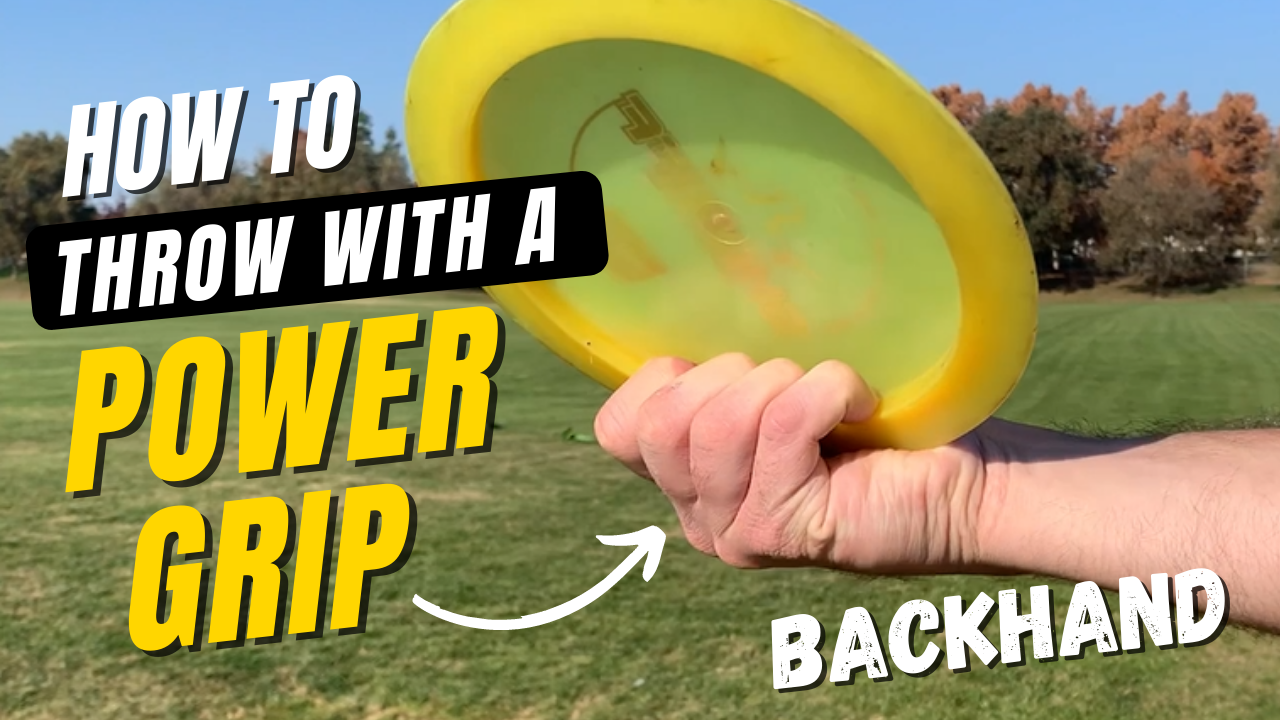
Power Grip - Disc Golf Mentor
10K views · Feb 15, 2022 discgolfmentor.com
The power grip for backhand is one of the most common grips, and it's great for driving off the tee. This grip provides a very firm hold, which allows you to put the maximum amount of torque on the disc without having to worry about it slipping out of your hand too early. This grip is best for driving off the tee and fairway driving. I use this grip for my tee shots because I get the best distance from using it. With that said, I wouldn’t recommend this grip for any shot that requires a really high degree of accuracy. Though players can become quite accurate with this grip, other grips are better for that. This grip is mostly for power and distance. Hold the disc firmly in the middle of your palm with your thumb on the top rim of the disc and your fingers curled around the edge with the tips set inside the rim of the bottom. Hold the disc firmly but not too tight and keep your wrist straight and loose as you throw.
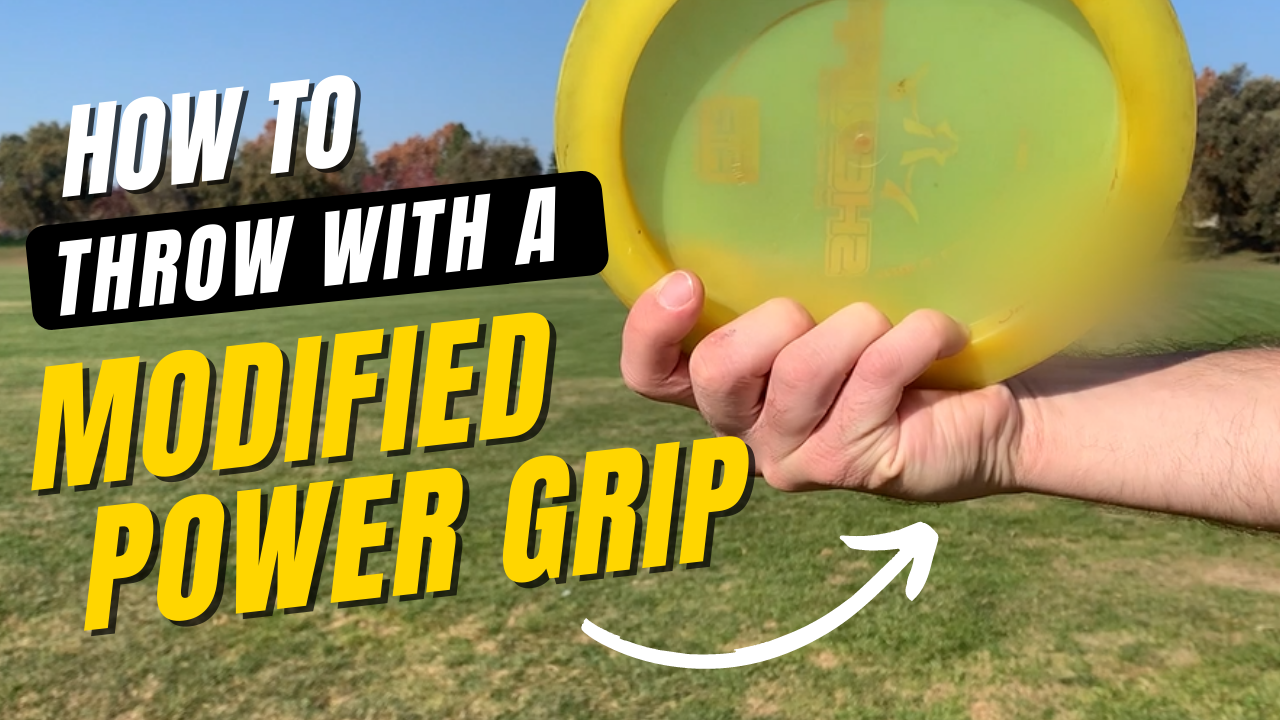
Modified Power Grip - Disc Golf Mentor
6K views · Feb 18, 2022 discgolfmentor.com
The modified power grip is a great all-around grip allowing for really good power, distance and accuracy. You may sacrifice a little bit of distance with this grip when compared to the power grip, but you’ll gain more accuracy, which is why you might prefer this variation. The modified power grip is a great grip for driving off the tee as well as fairway driving. You can also use this grip for midrange shots. The modified power grip is really similar to standard the power grip with a couple exceptions. The first is that the fingers wrapping around the edge of the disc are splayed out slightly. This puts the index finger resting on the outside edge of the disc instead of being tucked all the way under like the other fingers are.
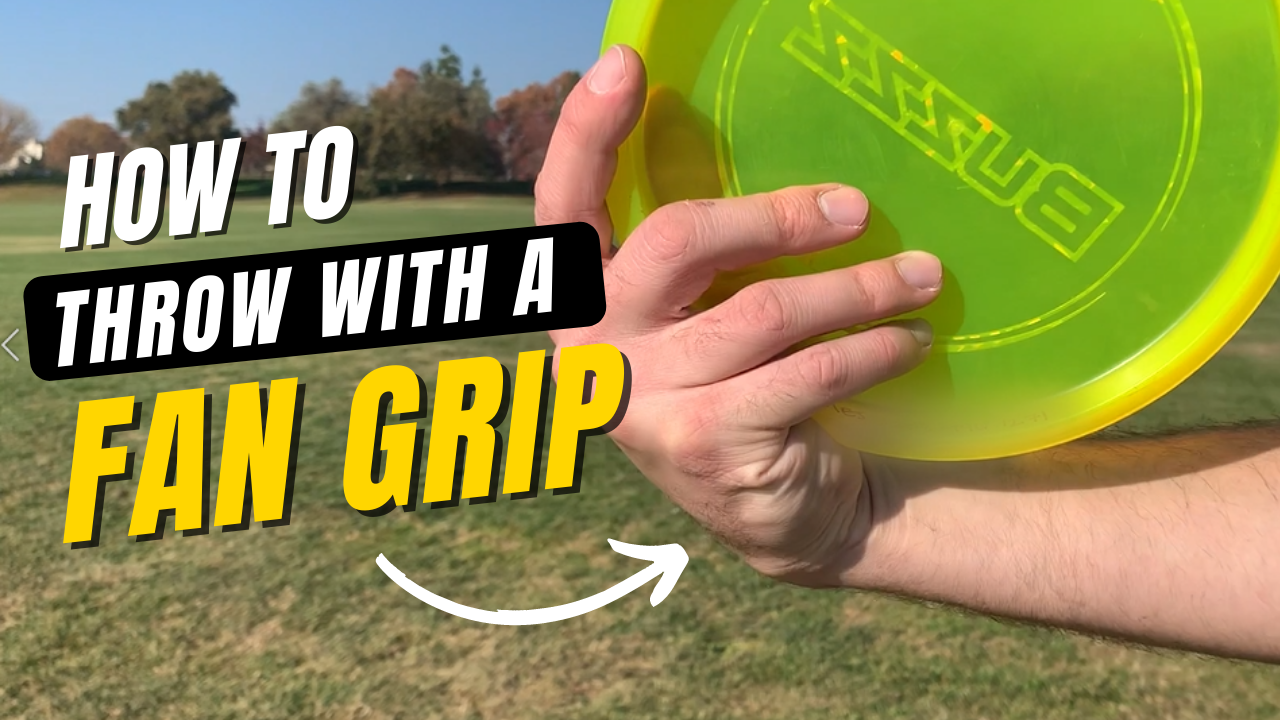
Fan Grip - Disc Golf Mentor
6K views · Feb 18, 2022 discgolfmentor.com
The fan grip provides the highest degree of accuracy and control. This grip does however sacrifice quite a lot of distance and power in order to gain that high level of control. Though the fan grip probably shouldn’t be your go-to grip for longer shots, it is great for shots that require that high degree of accuracy and control like putting and approach shots. The fan grip looks like this: Hold the disc in your dominant hand with your fingers splayed out and resting on the bottom of the disc. The forefinger can also be resting along the outside edge of the disc for added support, which gives you even more control.
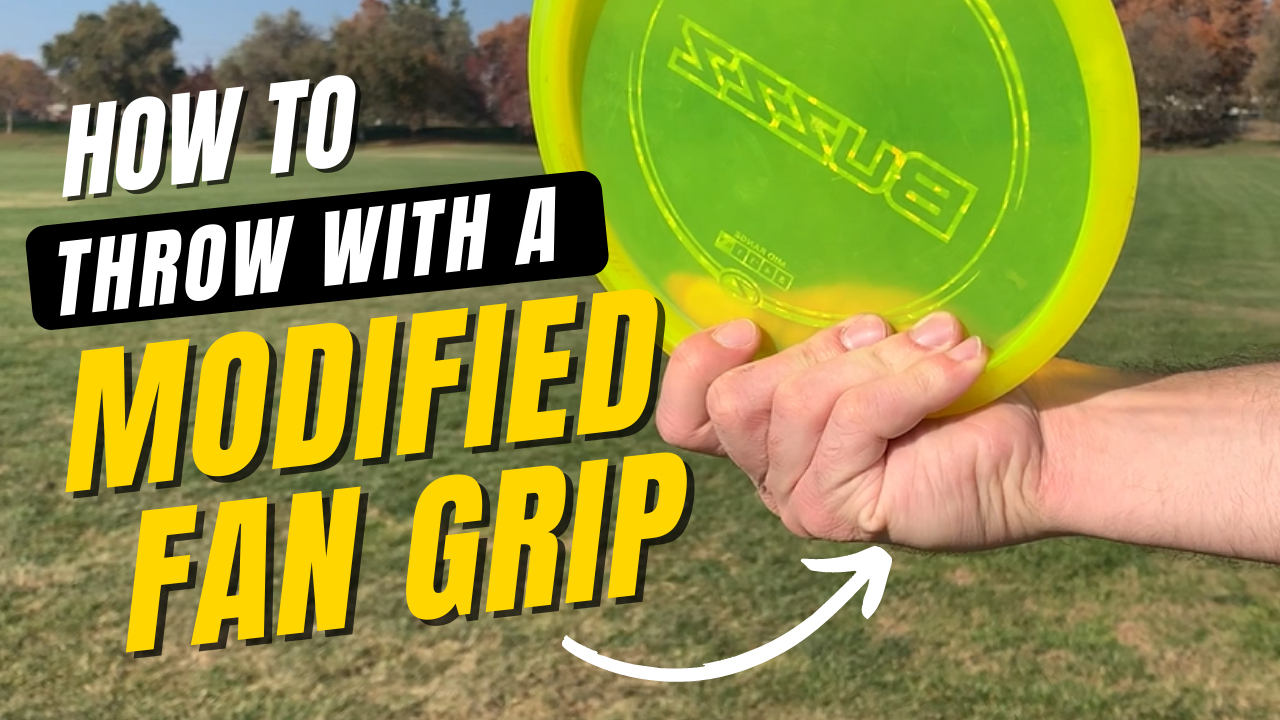
Modified Fan Grip - Disc Golf Mentor
5K views · Feb 18, 2022 discgolfmentor.com
The modified fan grip is a mix between the traditional fan grip, and the modified power grip, and it gives you a very high degree of accuracy and control, while still allowing you to throw a bit harder for more distance. This grip is great for midrange shots, but can also be used for fairway driving and approach shots depending on the situation. Personally, I use this grip with all of my midrange discs. I also like this grip for throwing putters as it allows me to firmly grip the inside of the disc despite it’s deeper rim. The modified fan grip looks like this: the index finger should be curled around the outside of the disc, resting on the inside lip, with the other fingers tightly pressing on the bottom of the disc.
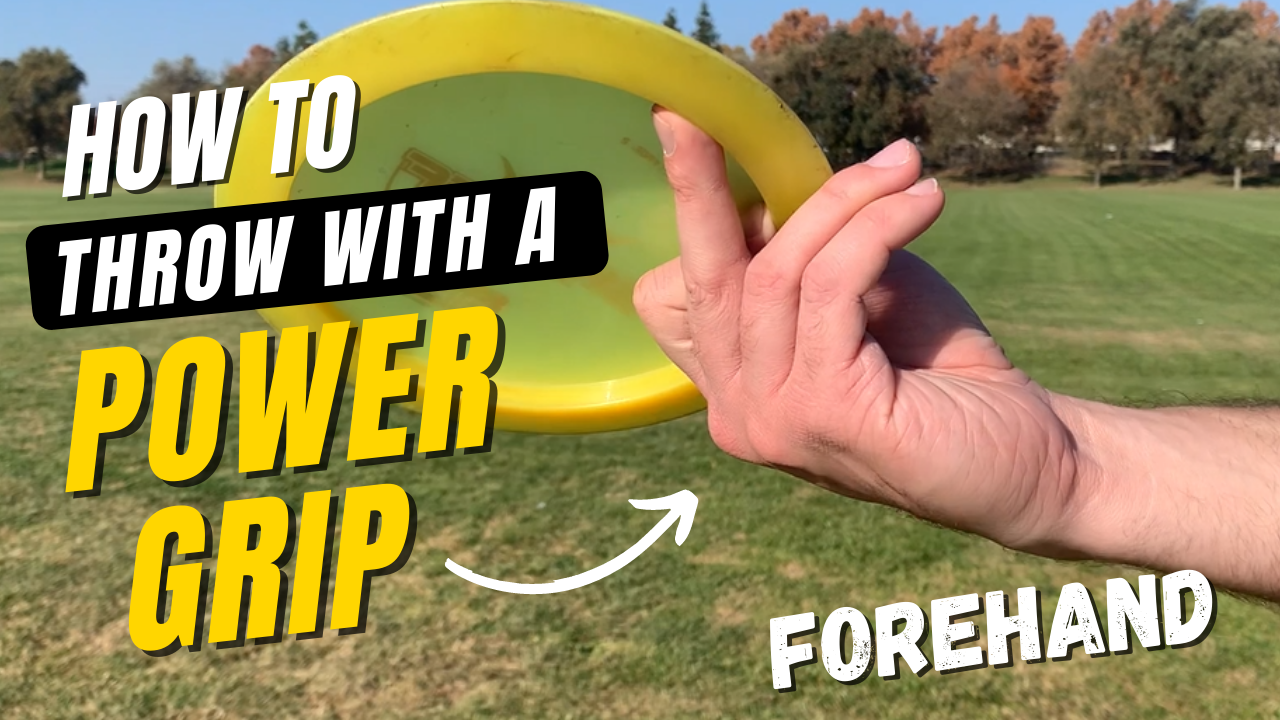
Forehand Power Grip - Disc Golf Mentor
3K views · Feb 18, 2022 discgolfmentor.com
The power grip for forehand maximizes distance but can be a little less accurate. Use this grip when you have a wide-open shot, but expect to need lots of practice to get a reliable release. The power grip for forehand looks like this: Hold the disc in your dominant hand nestled between your thumb and forefinger. The thumb should be on the top of the disc with your index finger wrapped around the outside of the disc and resting on the inside lip. The middle finger is completely straight, also resting on the inside lip of the disc. Finally, the ring finger and pinky are resting on the outside lip of the disc for support.
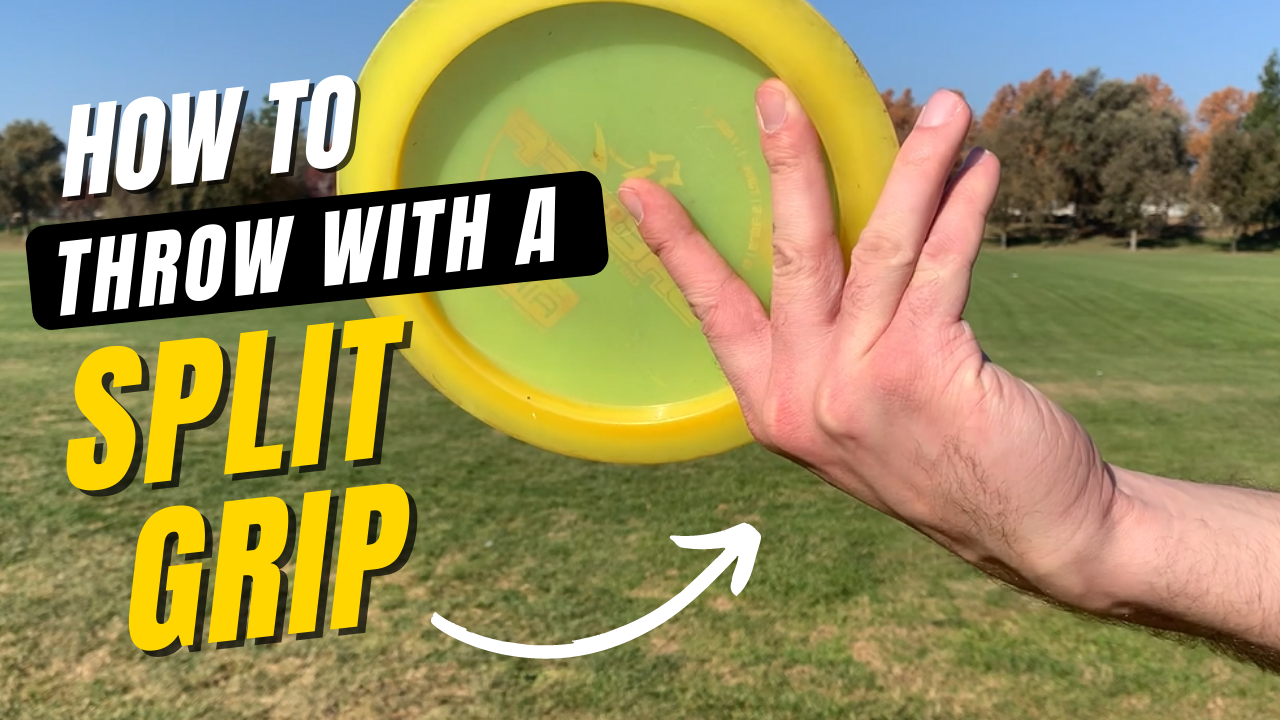
Split Grip - Disc Golf Mentor
3K views · Feb 18, 2022 discgolfmentor.com
Split grip for forehand is all about accuracy. It’s similar to the fan grip for backhand as it provides more support and control. I like this grip for approach shots when I need more control, especially when there’s an obstacle, like a tree or large bushes blocking my flight path. I can trust this grip to give me the control and accuracy I need to perform that shot. Hold the disc with your thumb on top of the of the disc, with your index and middle fingers spread out on the bottom of the disc making the shape of a peace sign. The middle finger should be resting along the inner lip of the disc. The ring finger and pinky should be resting on the outside for support.

Stacked Grip - Disc Golf Mentor
4K views · Feb 18, 2022 discgolfmentor.com
The stacked grip for forehand is a good balance of both power and accuracy. With this grip, you can feel confident in putting more strength into your swing without losing much control over where the disc is going to go. If you’re looking for a forehand grip that is stable and controllable but also allows you to put more power into your shot, this is a great all-around grip that could work for you. Hold the disc with your thumb on the top of the disc and your index and middle fingers stacked on top of one another on the inside lip of the disc. The ring finger and middle finger stay on the outside for support.
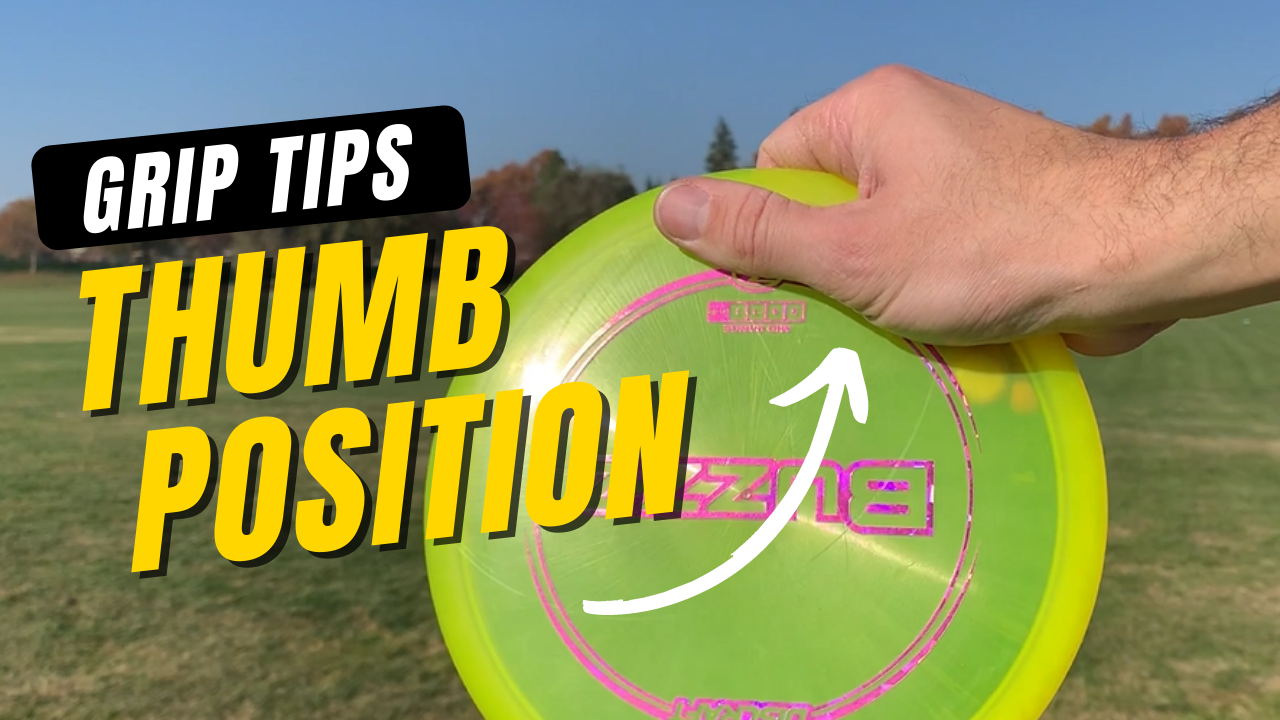
Thumb Position - Disc Golf Mentor
6K views · Feb 18, 2022 discgolfmentor.com
Changing the thumb position can help change the forward angle of the disc. This can be helpful if you often throw nose-up, which means that the front of the disc is pointed upwards as it flys. This angle is less aerodynamic and reduces how far you can throw because there’s more wind resistance on the bottom of the disc. To correct this, you should throw with the nose down, which simply means that your disc should be flatter in relation to its flight path. One good way to do this is to move your thumb more to the outside of the disc. You’ll notice the angle of the disc starts to point downwards. Play around with thumb positioning and changing the forward angle of the disc until you are consistently releasing flat.

Grip Pressure - Disc Golf Mentor
3K views · Feb 18, 2022 discgolfmentor.com
How firmly you hold the disc will vary depending on the grip, but in most cases you want a firm grip as opposed to a loose grip. A firm grip will result in better control, more spin, more power and a better flight with greater distance and accuracy. There’s definitely a balance to grip pressure though, and the best way to figure it out is with experience, but the most important tips I can give you are: Don’t hold onto the disc so tightly that your fingers hurt. Don’t hold onto the disc so loosely that it could be swatted from you grip by someone walking by.

Grip Lock - Disc Golf Mentor
3K views · Feb 18, 2022 discgolfmentor.com
Grip lock is a very common concern for lots of disc golfers and it basically means holding onto the disc too long causing a late release. This late release can make the disc fly off in a direction you might not have been intending. This is incredibly frustrating when it happens to you and there are a few factors that cause grip lock and a few things you can do about it. The first is having any moisture on your hands. If the air is very humid or if you have sweaty palms, the disc could stick to your hand. A great way to fix this is to carry something called birdie bag with you. Birdie bags are canvas sacks filled with powder, which soaks up any moister on your hands. You just pat the bag before you throw and you’re good to go. My favorite is from the Birdie Bag company. I'll post a link in the description for this video so you can easily find it. The second and probably most prevalent cause of grip lock and other release timing issues is rounding. Rounding in disc golf is when the disc travels in an arch around your body during your throw instead of in a straight line. This makes a lot of sense when you think about it. When your entire throw follows a straight path, it doesn’t matter when you release, because the disc will always be on target. If your throw follows a curved path, the moment you release is much more important as an early or late release would cause the disc to fly way off target. A good way to work on rounding is to move through your swing from start to finish in slow motion and watch your disc to see if it's following a straight path from reach back to release. I wrote a really in-depth article on how to fix rounding which you can get to from the link in the description for this video. If you think that you're rounding, I highly recommend you give it a read. Rounding can decrease your accuracy and distance, so it's very important to make sure you're throwing straight all the way through you're form. When I fixed my own rounding issues, I was able to add about 100 feet of extra distance to my throw.